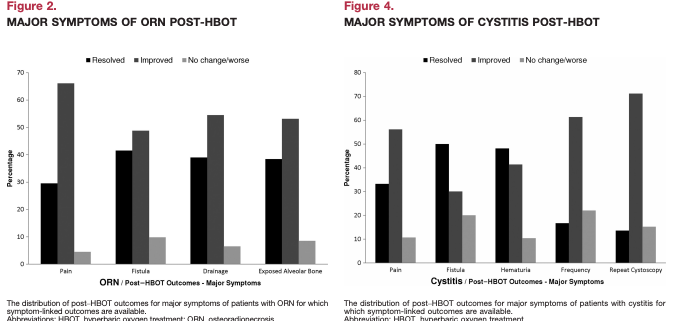
Outcomes of Radiation Injuries Using HBOT Observational Cohort Study
INTRODUCTION: Radiation injuries are an unfortunate consequence that can occur months or years following cancer treatment, resulting in complications due to tissue ischemia.1Y3 Osteoradionecrosis (ORN), laryngeal radionecrosis (LRN), dermal soft tissue radionecrosis (STRN), radiation-induced cystitis, and proctitis are among the most common radiation injuries.1,4 Mucosal tissues (such as gastrointestinal and urinary) are at high risk of such injuries because of their fragility and rapid cellular turnover. Hypoxia in the bladder leads to cystitis with pain, hematuria, excessive urination, and incontinence, with severe complications, including ulceration and fibrosis.5,6 Proctitis is similar to cystitis but occurs in the rectal tissues, the most distressing symptoms of which include pain, fistulae, ulceration, and rectal bleeding.7Y9 Radiation-induced tissue changes commonly occur in cancer patients, with as many as 10% developing ORN, STRN, or cystitis,1,5,6 and up to 20% of those receiving radiation to the pelvic area developing proctitis.7,8 Conservative treatment varies depending on the type of injury. For ORN, irrigation with an antiseptic, good oral hygiene, and debridement are often indicated.10 Analgesics can be administered for pain and antibiotics if infection is present. I
Outcomes-of-Radiation-Injuries-Using-HBOT-Observational-Cohort-Study


